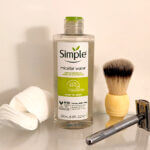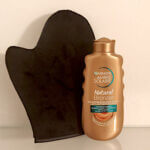
How to use a shaving brush for a smoother, closer shave. Everything from preparation and whipping up a dense lather to cleaning and storing.
If you prefer the convenience of multi-blade cartridges, you’ll get a close, comfortable shave with a canned foam or gel for which no brush is necessary. On the other hand, there’s no reason not to use one.
In fact, doing so may even inspire you to revisit the safety razor, which is where the shaving brush really counts.
Why Use a Shaving Brush?
Considering how cheap double-sided blades are, you’d think more men would favor them over exorbitantly priced cartridges. But the majority I’ve spoken to say they always cut themselves with a safety razor.
It’s because they don’t use a brush, which is imperative for smooth results.
Its job is to build a rich lather from either shaving cream or soap, soften the beard, lift the hair, and exfoliate. This allows the blade to cut through whiskers more efficiently without damaging the skin.
A further advantage of a brush is that it eliminates the need to cleanse before shaving. A quick rinse of your face will rid you of any debris accumulated during sleep, and the brush will do the rest.
In case this leaves you wondering, I shower post-shave in order to remove soap residue more thoroughly, which is essential if you’re prone to dryness, acne, or sensitivity.

Choosing the Right Bristles
The type of brush you choose should depend on how much time you have to prepare it before each shave, which lubricant you prefer, and which bristle texture you feel most comfortable with.
Badger Hair
Badger hair is available in four grades. This refers to texture and absorbency rather than one being better than the other.
- Pure badger is the stiffest grade and recognizable by its darker color.
- Best badger is produced from the finer hairs of the belly and sides, making it softer and more absorbent.
- Super badger is actually pure badger. But because it’s not trimmed to shape, its texture is softer and its appearance more luxuriant.
- Silvertip is the softest and most absorbent. It’s made from the fine hairs of the badger’s neck and, like super badger, is not trimmed. Since neck hair is rarer than that from the rest of the body, it’s more expensive.
Horsehair
Horsehair is firmer than pure badger but softer than synthetic and boar bristles. Combining hair from the mane and the slightly stiffer tail creates a texture suitable for both lathering and exfoliation.
Another plus is that it’s less expensive than badger.
Horsehair brushes lost their popularity due to an anthrax scare during and shortly after World War I. It was believed that contagion occurred through improperly disinfected horsehair obtained cheaply from abroad.
Synthetic Bristles
Synthetic brushes don’t absorb moisture and are stiffer than badger and horsehair.
This isn’t necessarily a disadvantage. The bristles retain enough water on their surface to build a decent lather and are effective exfoliating tools.
Due to their lack of absorbency, they are quick-drying, which is ideal in humid conditions and convenient for travel. It’s also great if you don’t have time to prepare your brush before shaving—more on that in a moment.
When new, synthetic brushes are somewhat springy but soften over time.
I’ve been using mine for the past five years. So far, it’s kept its shape and hasn’t shed—that’s more than I can say of my previous badger brushes.
Boar Bristle Shaving Brushes
Boar bristle brushes are the firmest of all but are still soft enough for even the most sensitive skin if properly prepared.
Like synthetic brushes, they’re springy when new but gain flexibility with use.
Unlike synthetic brushes, they’re absorbent.
Preparing Your Shaving Brush
Preparing your brush means soaking and softening it in order to achieve a dense lather.
This entails nothing more than submerging the bristles to about halfway up in a bowl or mug of warm water for five to 10 minutes. In the meantime, you can clean your teeth or take a shower, depending on your routine.
Warm water will give softer results than cold, but avoid hot since this can melt the glue that keeps the bristles in place.
I tried soaking my synthetic brush when it was new, hoping to break it in and decrease its springiness, but it made no difference. If you lack time in the morning, synthetic brushes require no preparation.

Which Shaving Lubricant With Which Brush?
Shaving Soap
Shaving soap usually comes in the form of a puck.
Because of its hard surface, it’s more suitable for firmer brushes.
Just swirl the dampened brush over the puck; if the soap is too hard to pick up effectively, soften it with a drop or two of warm water.
Once the brush is loaded, you can whip up a lather either in a bowl or directly on your beard. The former allows more control over consistency, while the latter has a better lifting and exfoliating effect.
Whether in a bowl or on your face, you work up a lather by moving the brush in energetic circular motions, adding small amounts of water as required for volume and density.
Shaving Stick
This refers to shaving soap in the form of a stick. Due to its compact size, it’s convenient for travel and storage; I keep mine in a shaving bowl together with my brush and razor.
You could use a stick in the same way as a puck, but there is another method.
Simply rub it over your damp face and lather up. This works for soft and firm brushes alike.
For added density, use the brush to pick up more product directly from the stick and go over your face again.
Shaving Cream
Shaving creams come in either a tube or a tub.
Because they contain more moisturizing ingredients than soap, they may be beneficial for dry skin. You’ll also find them with soothing ingredients like aloe vera and chamomile. On the other hand, you could use a pre-shave oil beneath soap for a similar effect—this is also recommended for sensitive and acne-prone skin.
But shaving creams are certainly a good idea if you favor a very soft brush.
To use, deposit an almond-size portion directly to the bristles or into a bowl. As with shaving soap, use energetic circular motions to build a thick lather, adding small amounts of water as required.
Or apply the cream directly to your beard and proceed as with a stick.
Caring for Your Shaving Brush
Cleaning
Rinse your brush thoroughly under warm, running water after every shave to prevent residue buildup.
For a weekly or fortnightly clean, swirl the bristles in a drop of baby or beard shampoo in the palm of your hand for about 15 seconds, then rinse under warm water.
If your brush seems to have lost its lathering ability and feels stiff or prickly against your skin, you’ll need to give it a deeper clean.
Soak it in a solution of four parts water and one part white vinegar for about 10 minutes. This will remove residue and soften the bristles. Rinse thoroughly and leave to dry.
Drying
After rinsing your brush, shake off excess water and pat the bristles with a clean towel. Never squeeze.
Air dry your brush by placing it bristles-down in a shaving bowl or, better still, on a brush stand. This will also help it keep its shape.
Storing Your Shaving Brush
Never store a damp brush in a cupboard or enclosed space since this can lead to mold or mildew.
Keep it away from direct sunlight, too, as excessive heat can weaken the bristles.
© 2025 J. Richardson
Related Posts
Disclaimer
The information provided by The Neat and Tidy Man (“we,” “us,” or “our”) on theneatandtidyman.com (the “site”) is for general informational purposes only. While we endeavor to keep the information up to date and correct, we make no representation or warranty of any kind, express or implied, regarding the completeness, accuracy, reliability, suitability, adequacy, validity, or availability of any information on the site. Under no circumstance shall we have any liability to you for any loss or damage of any kind incurred as a result of the use of the site or reliance on any information provided on the site. Your use of the site and your reliance on any information on the site is solely at your own risk.



